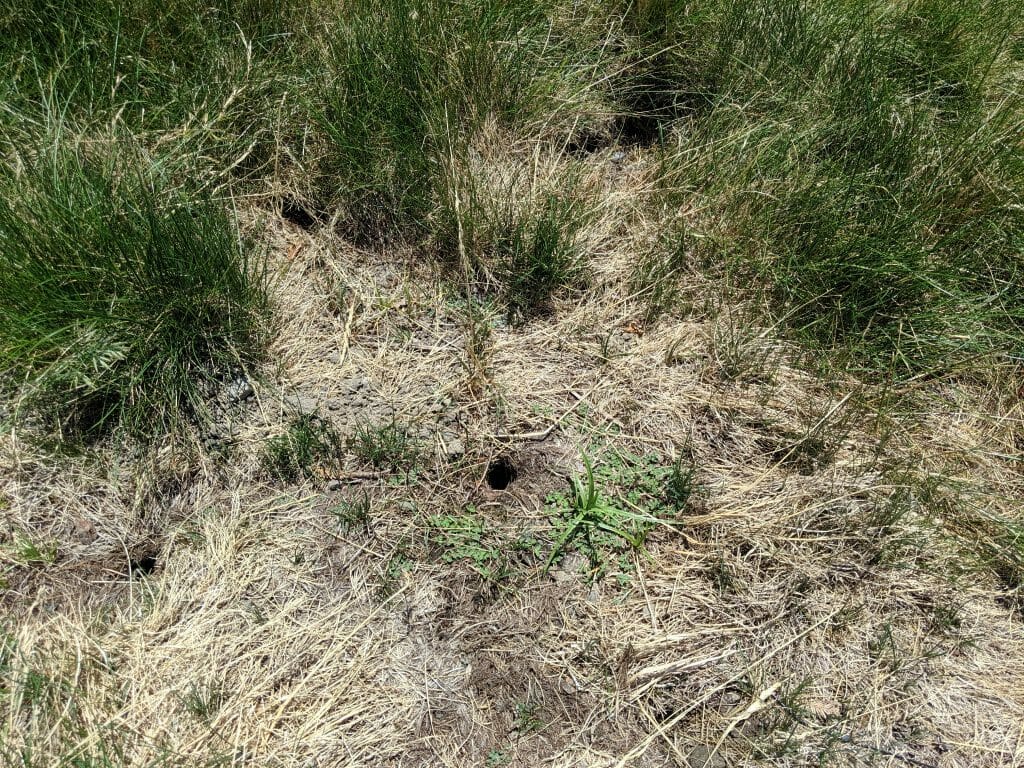What Are Meadow Voles?
Found primarily outside, meadow voles (simply referred to as “voles”) are very similar in appearance to mice. While there are more than 70 species of voles, the meadow vole (scientific name Microtus pennsylvanicus) is one of the most common.
Meadow vole populations in California tend to spike quickly unless they’re addressed. That’s because meadow voles can produce six babies every month, and those babies can start reproducing when they’re just a month old.


How to Identify Voles
Meadow voles have small, compact bodies, short-furred tails, small eyes, and ears that are partially hidden.
They are grey or brown in color, weigh less than 2 ounces as adults, and have bodies that are about 6-8” long.
They’re easily differentiated from mice due to their short tails and chunky bodies. While mice have tails about as long as their bodies, voles’ tails are about half the length of their body or less.
Behavior, Diet, and Habits of Voles
Voles live throughout the Northern Hemisphere, across America, Europe, and Asia. They’re territorial creatures with a natural home range of ¼ acre or less.
Depending on the species, voles live in various habitats, from forests to fields. Voles have an average lifespan of 12 months or less in the wild.
Voles breed faster than many other rodent family members, producing 5-10 litters each year with an average of 3-6 young in each litter. Females breed throughout the year. These little rodents are active year-round and do not hibernate during the winter.
To protect their young, voles dig underground burrows, which they use for shelter. Their extensive underground runways connect to other burrows. Voles will sometimes use burrows dug by other subterranean animals, like moles.
When it comes to diet, voles are primarily herbivores. They eat grasses, roots, seeds, bulbs, bark, and herbaceous plants. On rare occasions, they will also eat small snails and insects.
What Problems Do Voles Cause?
Voles can cause a wide variety of property damage. They consume garden plants and will ruin crops like celery, lettuce, tomatoes, spinach, and sweet potatoes.
They can also damage turfgrass and ornamental plants by gnawing the steps or destroying the root systems with their digging. In the winter, voles will gnaw on the bark of trees, occasionally girdling trees entirely.
Voles can also carry diseases like rabies and tularemia, which can spread to people and domestic pets.
What are the Signs Of A Meadow Vole Infestation?
Need help determining if you have a vole infestation? Look for these signs:
- Trails in your yard. Voles make hollow tunnels just under the surface of grass and will tunnel between the snow and grass in areas with heavy snowfall during the winter. Meandering trails or paths on your property are a sign of vole infestation.
- Destroyed plants. Voles feed on garden plants from below, feasting on the roots and causing them to collapse. Root vegetables like potatoes, onions, beets, and sweet potatoes are especially at risk.
- Holes in your soil. Vole tunnels have 1-2” openings, and tend to pop up under shrubs, mulch, or spreading plants.
- Vole sightings. Voles are quick-moving rodents, but you can occasionally spot them moving through tall grass or feeding near the opening of their tunnels.
How to Keep Voles Out of Yard & Garden
To prevent meadow vole damage on your property, here are a few things we recommend:
- Remove weeds and dense overgrowth from your property
- Mow your lawn regularly to keep your grass short
- Guard young trees and vines by surrounding them with heavy-duty plastic cylinders
- Install vole-proof exclusion fencing that is buried at least six inches below ground
For more information on how to get rid of voles, check out our complete guide.
How Smith’s Can Help Get Rid Of Meadow Voles
At Smith’s Pest Management, we offer highly effective meadow vole control that is customized for your home or business.
We’ll discuss your situation over the phone or come out to conduct an onsite inspection.
Based on our assessment, we’ll develop a plan of action that could include vole trapping, fumigation, or baiting. To learn more about our services, please reach out today!
Helpful Meadow Vole Articles

